NASA Issues Hubble Space Telescope Status Report
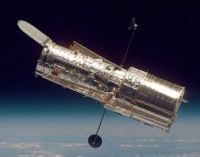 NASA engineers successfully activated the Advanced Camera for Surveys at 9:12 a.m. EDT Friday aboard the agency’s Hubble Space Telescope. Checkout was completed at 10:20 a.m. EDT with science observations scheduled to resume Sunday, July 2.
NASA engineers successfully activated the Advanced Camera for Surveys at 9:12 a.m. EDT Friday aboard the agency’s Hubble Space Telescope. Checkout was completed at 10:20 a.m. EDT with science observations scheduled to resume Sunday, July 2.
“This is the best possible news,” said Ed Ruitberg, deputy associate director for the Astrophysics Division at NASA’s Goddard Space Flight Center, Greenbelt, Md. “We were confident we could work through the camera issue, and now we can get back to doing more incredible science with the camera.”
Engineers began uploading commands to the instrument Thursday, June 29, in an effort to restore operational status. A pre-programmed observing timeline for normal camera science operations will begin executing at approximately 8 p.m. EDT on July 2.
Engineers received indications on Monday, June 19, that power supply voltages were out of acceptable limits, causing the camera to stop functioning. The instrument was taken off line, so engineers could study the problem and determine the appropriate remedy. Hubble observations continued using other onboard science instruments.
The third-generation Hubble instrument consists of three electronic cameras, filters and dispersers that detect light from the ultraviolet to the near infrared. Astronauts installed the camera during a servicing mission in March 2002. It was developed jointly by Goddard, Johns Hopkins University, Baltimore; Ball Aerospace, Boulder, Colo.; and the Space Telescope Science Institute, Baltimore.
For information about the Hubble Space Telescope, visit:
http://www.nasa.gov/hubble
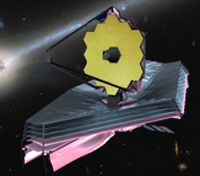 The James Webb Space Telescope (JWST) is a large, infrared-optimized space telescope, scheduled for launch in 2013. JWST will find the first galaxies that formed in the early Universe, connecting the Big Bang to our own Milky Way Galaxy. JWST will peer through dusty clouds to see stars forming planetary systems, connecting the Milky Way to our own Solar System. JWST’s instruments will be designed to work primarily in the infrared range of the electromagnetic spectrum, with some capability in the visible range.
The James Webb Space Telescope (JWST) is a large, infrared-optimized space telescope, scheduled for launch in 2013. JWST will find the first galaxies that formed in the early Universe, connecting the Big Bang to our own Milky Way Galaxy. JWST will peer through dusty clouds to see stars forming planetary systems, connecting the Milky Way to our own Solar System. JWST’s instruments will be designed to work primarily in the infrared range of the electromagnetic spectrum, with some capability in the visible range.
JWST will have a large mirror, 6.5 meters (21.3 feet) in diameter and a sunshield the size of a tennis court. Both the mirror and sunshade won’t fit onto the rocket fully open, so both will fold up and open only once JWST is in outer space. JWST will reside in an orbit about 1.5 million km (1 million miles) from the Earth.


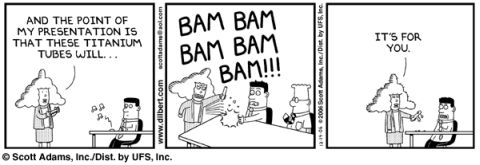
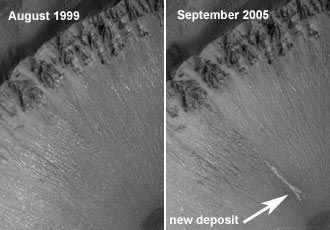 Image right: A new gully deposit in a crater in the Centauri Montes Region. Image credit: NASA/JPL/Malin Space Science Systems
Image right: A new gully deposit in a crater in the Centauri Montes Region. Image credit: NASA/JPL/Malin Space Science Systems  The law that Gov. Arnold Schwarzenegger signed Friday banning motorists in California from holding cell phones while driving does not take effect until July 1, 2008, but the governor is urging drivers to begin complying now.
The law that Gov. Arnold Schwarzenegger signed Friday banning motorists in California from holding cell phones while driving does not take effect until July 1, 2008, but the governor is urging drivers to begin complying now.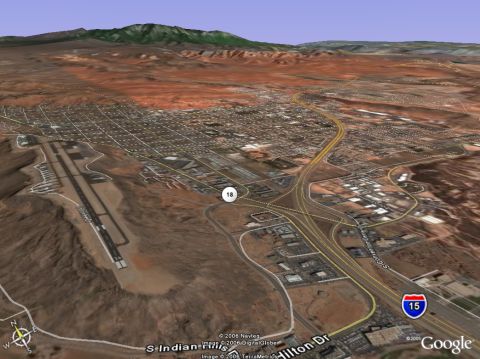
 NASA engineers successfully activated the Advanced Camera for Surveys at 9:12 a.m. EDT Friday aboard the agency’s Hubble Space Telescope. Checkout was completed at 10:20 a.m. EDT with science observations scheduled to resume Sunday, July 2.
NASA engineers successfully activated the Advanced Camera for Surveys at 9:12 a.m. EDT Friday aboard the agency’s Hubble Space Telescope. Checkout was completed at 10:20 a.m. EDT with science observations scheduled to resume Sunday, July 2. The James Webb Space Telescope (JWST) is a large, infrared-optimized space telescope, scheduled for launch in 2013. JWST will find the first galaxies that formed in the early Universe, connecting the Big Bang to our own Milky Way Galaxy. JWST will peer through dusty clouds to see stars forming planetary systems, connecting the Milky Way to our own Solar System. JWST’s instruments will be designed to work primarily in the infrared range of the electromagnetic spectrum, with some capability in the visible range.
The James Webb Space Telescope (JWST) is a large, infrared-optimized space telescope, scheduled for launch in 2013. JWST will find the first galaxies that formed in the early Universe, connecting the Big Bang to our own Milky Way Galaxy. JWST will peer through dusty clouds to see stars forming planetary systems, connecting the Milky Way to our own Solar System. JWST’s instruments will be designed to work primarily in the infrared range of the electromagnetic spectrum, with some capability in the visible range. to play)
to play)